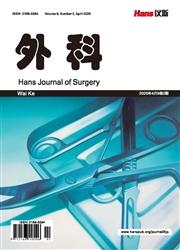Analysis of Curative Effect of Flexible Ureteroscope Holmium Laser Lithotripsy Performed by Doctors with Different Seniority
引用次数: 0
Abstract
Objective: The clinical efficacy of flexible ureteroscopic holmium laser lithotripsy (RIRS) performed by doctors of different seniority. Methods: The clinical data of 139 patients with upper urinary tract calculi who underwent RIRS in our hospital from June 2020 to January 2022 were retrospectively analyzed. There were 82 males and 57 females, aged (48.83 ± 12.17) years old. The maximum CT value of the stone was (1107.76 ± 356.83) HU, and the maximum stone diameter was (15.01 ± 6.12) mm. There were 47 cases of unilateral renal calculi, 8 cases of bilateral renal calculi, 62 cases of unilateral upper ureteral calculi, and 22 cases of unilateral upper ureteral calculi combined with renal calculi. Twenty-eight cases were preoperatively indwelled with double J tubes. Preoperative white blood cells (WBC) (6.84 ± 2.41) × 10^9/L, procalcitonin (PCT) (1.27 ± 0.83) ng/ml. All operations were performed under general anesthesia, and the patients were in the li-thotomy position. The flexible ureteroscopy combined with holmium laser lithotripsy was used. After the flexible scope successfully entered the renal pelvis, the renal pelvis and the renal calyces were first observed and the calculi were found. Use 200 μm fiber lithotripsy, holmium laser power of 15~45 w (0.8~1.8 J), and assist the stone extraction basket to extract stones according to the actual situation. During the operation, the renal pelvis and renal calyces were checked to ensure that the stones had been completely powdered, and the double J tube and the urinary catheter were indwelled at the end of the stone crushing. The operations were performed randomly by surgeons with different seniority. Results: All operations were successfully completed, and the operation time was (86.71 ± 30.51) minutes. There was no significant difference in operation time between the two groups (t = 0.499, p = 0.063). The intraoperative blood loss was (47.80 ± 22.86) ml, and there was no significant difference in intraoperative blood loss between the two groups (t = 1.183, p = 0.068). The blood WBC count was re-examined on the 1st day after operation (6.84 ± 2.41) × 10^9/L, and the difference was statistically significant compared with that before operation (t = 1.127, p < 0.05). There was no statistical difference in WBC count between the two groups after operation. PCT (1.27 ± 0.83) ng/ml, the difference was statistically significant (t = 1.112, p < 0.05), and there was no statistical difference in postoperative PCT between the two groups’ academic difference (t = 0.964, p = 0.923). The length of hospital stay was (6.59 ± 2.47) days, and there was no significant difference in the length of hospital stay between the two groups (t = 0.672, p = 0.632). All patients were followed up after returning to the hospital to remove the double-J tube, and the stone-free rate (SFR) was 100%. Conclusions: RIRS is an effective treatment method for patients with small and medium stones in the upper urinary tract. With the localization of flexible ureteroscopy, RIRS has the advantages of simple operation and high safety. RIRS can be widely promoted in primary hospitals.不同资历医生行输尿管软镜钬激光碎石的疗效分析
本文章由计算机程序翻译,如有差异,请以英文原文为准。
求助全文
约1分钟内获得全文
求助全文

 求助内容:
求助内容: 应助结果提醒方式:
应助结果提醒方式:


